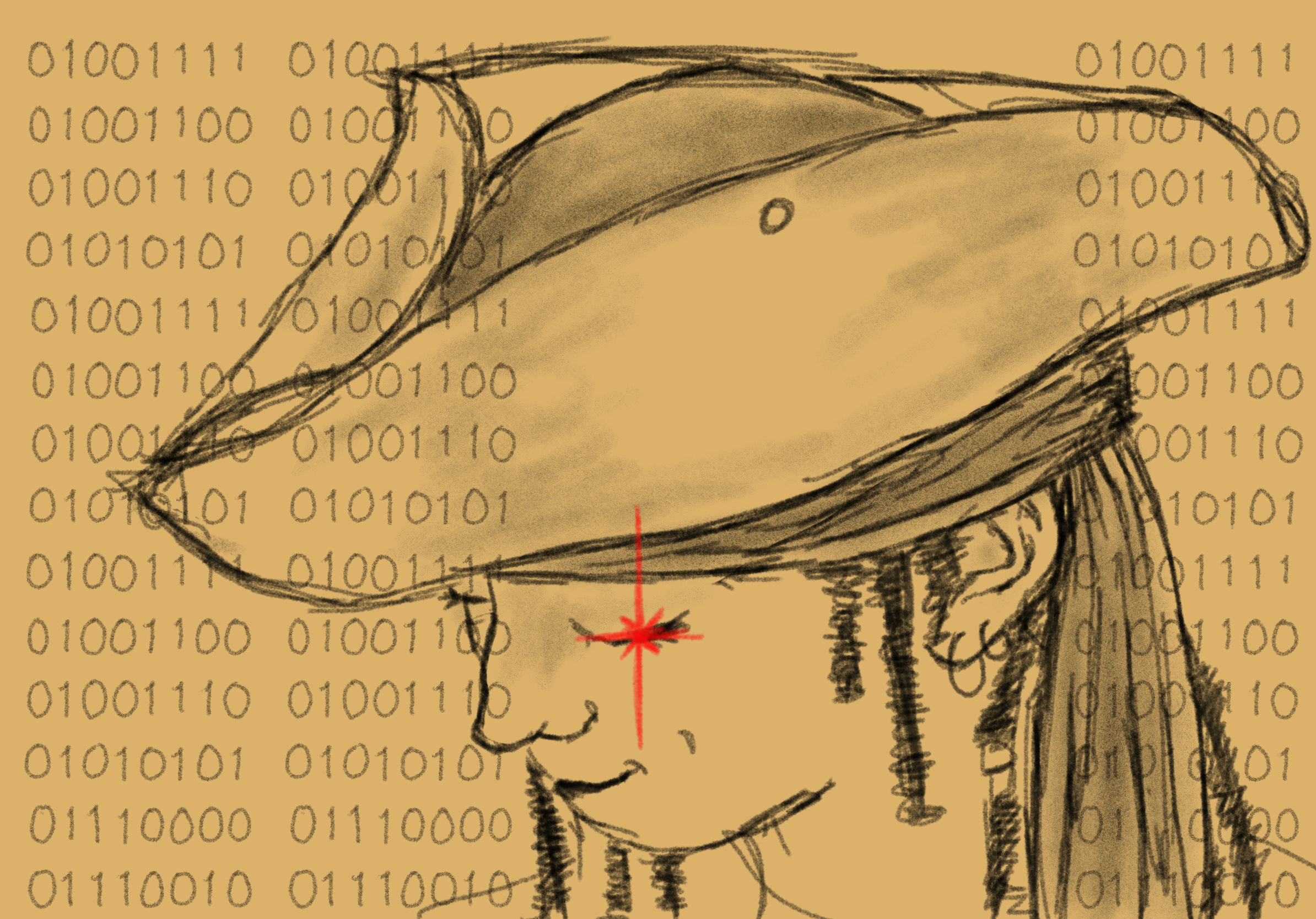
The fact that human beings are wired for social connection is not new. We thrive off having a sense of interpersonal connection, validation, and belonging – not just in our friendships and relationships, but in our general communities too. It’s found in anthropology research that humans have always required social behaviors and cooperation in order to survive.
So, having grown up in the age of the internet, today’s generation of young adults might have had… unique experiences when it comes to socialization.
Where in hunter-gatherer times, communities would banish individuals for failing to maintain group harmony, now we just cancel them as a form of digital ostracization. Instead of accusing your ex-best friend of being a witch and stoning them, we’ll just unfollow them on Instagram.
Even in terms of romance, if you were born in the late 90’s or early 2000s, your first girlfriend might not have been found on your middle school playground but rather in the chatrooms of a Minecraft server. Maybe your first sexual experience wasn’t even in person, but through the transaction of nudes through Snapchat.
The fast-paced evolution of human connection in today’s digital world has birthed digital media to meet these new needs accordingly. How have our social norms evolved accordingly? And what are some of the sociological, psychological, and physical impacts?
Evolution of Social Norms: Physical and Digital Ostracism
-------------------------------
1 Sakman, E. (n.d.). (PDF) humans as social primates. Research Gate.
We have all experienced that cringey feeling while scrolling through social media, right? Like when we come across a tween’s thirst trap on TikTok that has two likes on it?
Whether it’s an embarrassing post, a controversial opinion, or generally just a behavior that feels off-base to what’s socially acceptable, these moments stick with us because they clash with our collective sense of normality. This instinct reinforces what’s considered acceptable in society, giving us a united front against cringey behavior. Laughing at cringey stuff is like saying we know what’s acceptable, but you don’t.
This mentality of “us versus them” is not unique to the internet; it’s a social instinct that has shaped human behavior since the start of civilizations. Ancient hunter-gatherer tribes depend on group cohesion for survival; having shared customs and a sense of unity. When an individual’s behavior did not align with the group’s collective values, we viewed them as dangerous and as outsiders. These individuals often faced isolation or banishment.
Fast forward to today, the internet still acts as an expansive extension of our oldest social instincts. People still seek out connections and affirm their belonging to society by posting, commenting, and interacting with trends. When we encounter behavior online that feels awkward and strange, we send it to our personal group chats as a form of rejecting and ridiculing their behavior.
In some ways, the internet acts like one collective global society. Sometimes we can all gather together to banish someone who threatens our social harmony – we call this cancel culture.
And yet, the internet offers space for people to find belonging digitally where they cannot physically. Microniches on digital platforms exist to connect people with others who share specific interests, no matter how misunderstood they are by mainstream society. Subcultures like furries, emo communities, and fandoms all have a place to feel accepted.
The internet has provided new ways to cope with ostracization, while simultaneously reinforcing our need to define who belongs and who doesn’t. Our online world may seem modern, but our social behaviors are still rooted in the same instincts that guided our earliest civilizations.
Digital Romance and Nudes as Intimacy
---------------
2 Schwartz, S. J. (n.d.). US versus them: An intractable problem in human nature?. Psychology Today.
For most of history, romantic relationships were bound by physical proximity. That provides an explanation as to why small, remote communities were more comfortable with marrying first-cousins to each other – it’s not like there were many fish in the sea available. Nowadays, a plethora of long-distance relationships can thrive online, expanding opportunities for romantic connection.
In fact, many relationships exist purely online by individuals who have never met one another in person. This is entirely possible thanks to online chat rooms, multiplayer games, and social media.
Instead of tucking a boudoir photo into a wax-sealed envelope for your soldier husband, the modern equivalent would be sending a nude to your partner. But sending nudes as a gesture of intimacy won’t take a month like sending a letter; it occurs instantaneously. The normalization and prevalence of sending nudes and sexting has led it to be somewhat normalized and casual, while blurring the lines between intimacy, privacy, and accessibility.
This shift in how we experience intimacy with our partners has reshaped expectations and norms in our relationships. The boundaries of privacy have changed; a partner’s willingness to share private images and messages could be considered a marker of trust or closeness. However, the potential for these interactions to be publicized or shared with unintended recipients also brings new concerns around privacy:
The user-interfaces of these platforms breed an environment for connection to occur quickly, seamlessly, and “privately.” Snapchat’s ‘one-time view’ feature encourages quick, impulsive exchanges that emulate a sense of privacy and realness. Yet, this sense of security is quite misleading.
This false sense of privacy can instigate users to share content that they otherwise wouldn’t, believing it to be fleeting. However, nothing on the internet truly disappears; even on platforms designed to limit permanence, there will always be ways to capture and save that content. Screenshotting, or using a second device to photograph the screen can preserve these temporary exchanges indefinitely.
Even removing texts, photos, and files from your own device is becoming increasingly challenging due to the rise of cloud-based storage. Deleting an image from your phone doesn’t necessarily mean that it’s erased from your iCloud, Google Photos, or OneDrive account.
In the history of human connection, we have never been so constantly available to others, with tools like location-sharing granting others intimate personal information that can easily be abused or manipulated. When it comes to dating online or sharing nudes, both of which are very vulnerable positions to be in, these tools present new and unforeseen dangers that challenge users’ control over their data and safety.
Moreover, several studies also identified a troubling link between sexting and ‘self-objectification’, which refers to the belief that one’s worth is determined by others’ perception, evaluation, and approval. This dynamic is particularly concerning, because other studies have tied young women’s engagement with sexting to peer pressure, perpetuating the idea that their bodies exist primarily for the pleasure of others.
The normalization of digital intimacy has created some serious implications around self-objectification, including impacting people’s ability to be assertive and set boundaries while engaging in relationships and physical sex acts.
In the digital dating world, anonymity can create a false sense of security that emboldens individuals to take part in risky behavior due to the lack of accountability. Individuals can misrepresent themselves, leading to catfishing, emotional manipulation, and even harassment. This culture of anonymity also fosters a space where consent is often overlooked or violated.
As these boundaries blur in the evolved dating landscape, the risks of emotional harm and predation increase. It becomes crucial for individuals to navigate these spaces with a heightened awareness, recognizing the complex vulnerabilities between intimacy and safety in the digital realm.
Emergence of Digital Communities: Facebook Groups and Extremism
Some studies show that the absence of social acceptance can even cause individuals physical pain. The primal instinct for connection and belonging drives people to seek out groups, which is made quite easy and convenient on the internet.
---------------
3 Morelli, M., & Bianchi, D. (2017, November 27). Sexting as the mirror on the wall: Body esteem attribution, media models and objectified body consciousness. Academia.edu.
4 Gassó, A. M., Klettke, B., Agustina, J. R., & Montiel, I. (2019, July 3). Sexting, mental health, and victimization among adolescents: A literature review. International journal of environmental research and public health.
Users of the internet can form communities and interact based on niche interests, no matter how specific. These groups can get pretty silly and creative, such as the Facebook group named “People who sort of look like Adam Sandler but aren’t Adam Sandler,” which has over 116, 000 followers.
Hobbyists, gamers, readers, and groups with shared passions can find each other more easily through the internet. These online communities can foster real, profound, supportive relationships. Finding like-minded people is also made much easier by the algorithm that media platforms employ to curate tailored content for user engagement.
However, consistently receiving tailored content can harbor and promote echo-chambers within communities. Prolonged exposure to a narrow range of ideas can isolate users from alternative perspectives, pushing them to adapt to more extreme beliefs and ideologies.
A notable example of online extremism harbored by subcultures and niche groups include the incel movement, which shares a common belief in their victimhood against society for their failure to receive women’s attention. Platforms like Reddit and 4chan facilitate the formation of incel subcultures, where users can reinforce one another’s grievances and engage in discussions that escalate to misogyny and violence.
Online cults are also a fascinating consequence of the evolution of digital media. While preying on people’s need to belong and connect, online communities offer vulnerable individuals with a sense of identity and purpose.
The Acceleration of Social Evolution
The fast-paced evolution of connection and culture in today’s world has out-paced academic research to fully understand the sociological, psychological, and physical impacts of digital media on individuals and societies.
While the desire for human connection is timeless, the internet has transformed how we fulfill this essential need, complicating it in ways that are fascinating and concerning.
---------------
6 Basu, T. (2020, April 2). The “Manosphere” is getting more toxic as angry men join the incels. MIT Technology Review.
On one hand, the common denominator between all digital connections is anonymity. In a landscape where avatars, usernames, and face filters obscure true identities, individuals can control how they are perceived. This ties back to all the risks mentioned with this evolving landscape, including encouraging extremism in niche subcultures and predation in online dating culture. One can argue that anonymity has depersonalized human connection and diminishes its inherent value by making it less ‘natural’.
Though perhaps it is just another manifestation for our human need for connection, adapted to the tools and contexts available to us and our inherent need to feel accepted. In that case, the Adam Sandler Look-Alike Facebook group is just as natural a consequence of living in a society as having a real-life friend group.
Digital safety is an essential, yet overlooked aspect of modern connection. While we continue to open up our lives and emotions online, we expose ourselves to unique vulnerabilities such as data exploitation and emotional manipulation. Social media platforms promise connection, but also carry inherent risk. It is imperative that we act mindfully of the information that we share and receive, understanding that the convenience of digital connection could come at the cost of our physical and psychological safety.
As we navigate this ever-evolving landscape, the critical questions remain: What will be the long term consequences of digital connection? Will the ease and convenience of platonic and romantic digital interaction foster a society where physical isolation becomes the norm, despite the abundance of virtual connection? As we continue to adapt and evolve to these social changes, only time will reveal the answers, challenging us to find balance in an increasingly connected and complex world.



